Opinion & Analysis
The 5 Biggest Mistakes in Club Fitting
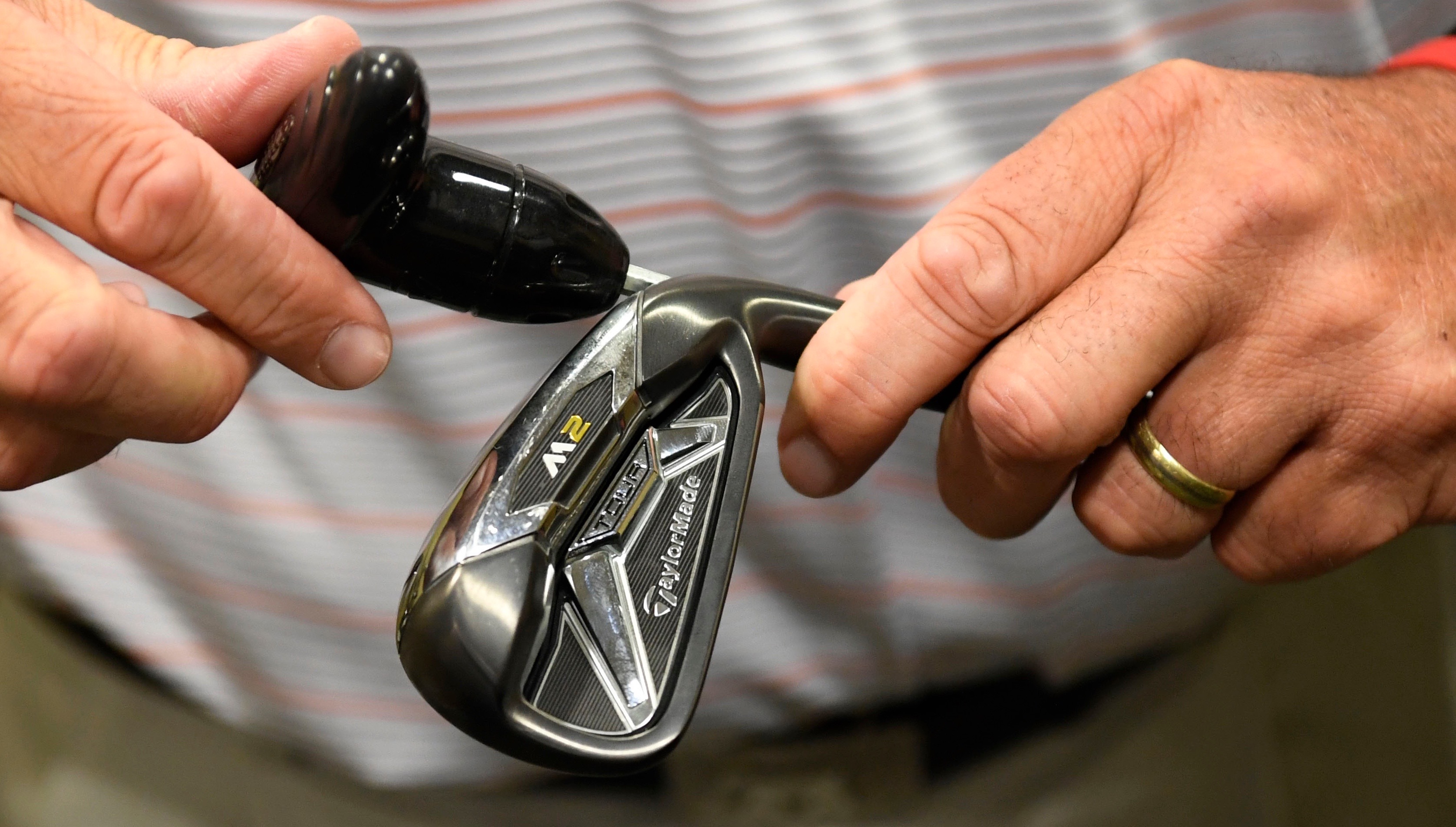
Throughout my golf career, I have been fortunate to spend time with some of the best club fitters in the world. Before I became a full-time golf instructor, I was a Tour Rep for TrackMan, which had me traveling around the U.S. and beyond to top club fitters and golf professionals. Through that experience, combined with my own teaching and fitting background, I have come to understand the many mistakes that can be made during a club fitting.
This article is not meant as a criticism toward any club fitter or golf professional. I simply want to pass on what I’ve learned to GolfWRXers and the greater golf community to do my part to make sure golfers don’t end up with a set of clubs that are a detriment to their games (and their wallets). These are the 5 biggest mistakes in club fitting.
1. Using Face Tape
Face tape has been used in club fitting for a long time. It is extremely helpful in showing us where on the club face a golf ball was struck, and it helps us understand more about why the ball is flying the way it does. This is the only way I would ever recommend using tape on the face of a golf club.
If you are a club fitter or a golf professional trying to protect your golf club during a fitting, it’s fine to put tape on the top or bottom of a wood to protect it from sole wear or potential sky marks. It’s a grave mistake to use tape on the face when you’re evaluating ball flight and/or launch monitor numbers, however, and you can see why in the example below.
With the tape on his driver club face, this golfer had about 700 more rpm of spin and 14 yards less total distance. If you are a golf professional and you want to dial in your students, DO NOT use face tape when you’re evaluating ball flight. A good alternative to face tape is Dr. Scholls foot spray. It may sound a little strange, but it will show where the ball was struck and have little to no effect on the ball flight.
2. Assuming Optimal Launch and Spin are Uniform
This is something I hear quite a bit, even from golf equipment manufacturers. Not too long ago, many in the golf industry were in agreement that the optimal launch and spin for any golfer with a driver for maximum distance was a 17-degree launch angle with 1700 rpm of spin. This might be true in a bubble, but we as humans have thousands of different combinations of swings and speeds, making this guideline almost completely useless. Take a look at some numbers for two very different golfers below: Player A and Player B. I want you to consider what you think good launch and spin should be for both.
Player A
Player B
In this scenario, I think most would assume that Player A (a low-speed player) would need significantly more spin to be optimal than Player B (a high-speed player). The rule of thumb is that the slower a golfer swings, the more spin they need to keep the ball in the air for maximum distance. Using that guideline, however, you wouldn’t optimize either golfer.
In club fittings, everything hinges on the specific needs of the golfer in front of you. The three main player inputs that determine optimal launch and spin are:
- Club Head Speed
- Attack Angle
- Desired Trajectory
In choosing a desired trajectory, a golfer has three options. They can opt for a high trajectory for maximum carry distance, a low trajectory for the most roll out (and sometimes the most total distance, depending on the conditions of the courses they play), or a combination that balances the two (carry and total). For simplicity, let’s assume both of these golfers want to optimize for the combination of carry and total. Now, let’s take a look at the optimization chart for each player below.
Player A Optimized
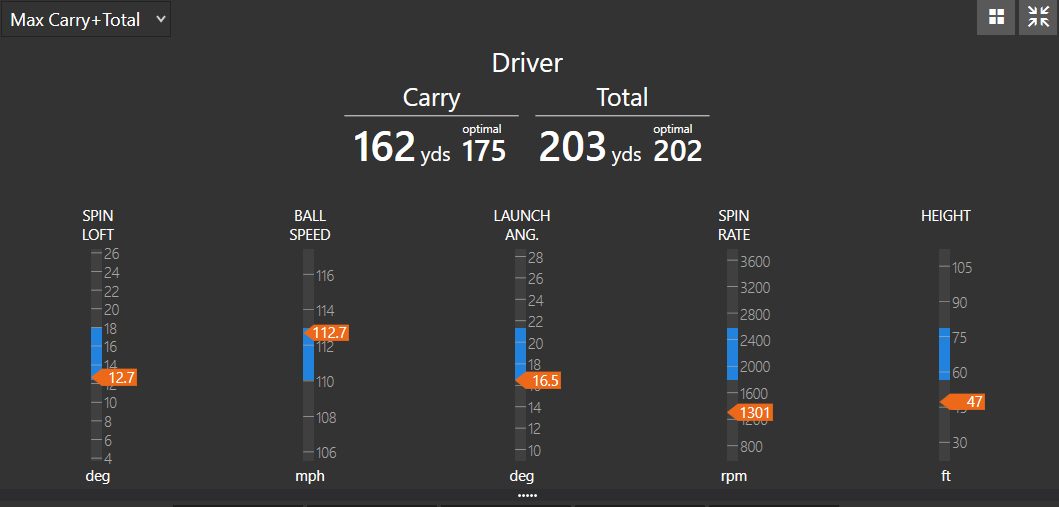 Player B Optimized
Player B Optimized
As it turns out, Player B with 135 mph of club head speed needs more spin than Player A with 76 mph of club head speed. It goes against my instincts, too, but it’s true. The reason is the Attack Angle for each player.
- Player A is hitting 5-degrees up on the ball, so he is already launching the ball into the air. For that reason, he doesn’t need as much spin for optimal distance.
- Player B is hitting 3-degrees down on the ball, so he needs more more loft and more spin to keep the ball in the air for optimal distance.
3. Only Looking at Distance Gained
This is the biggest and most common mistake I see during fittings. Both golfers and fitters are guilty of focusing on the one shot that travels 8-10 yards further during a fitting, and because it has the most distance potential, they assume that it’s the best club. I will never tell anyone that distance isn’t important, but I believe that too much emphasis has been placed on it in both driver and iron fittings.
Dispersion is huge for playability, and I suggest fitters take the time to allow golfers to hit plenty of shots in fittings. This allows them to not only optimize for distance, but also for dispersion.
Golf equipment manufacturers have given us fantastic equipment that can makes it very easy to adjust ball flight. The ability we have to tweak weighting, face angle, and lie angle can be vital to our ability to create a tighter dispersion. If you’re fitting outside, however, I encourage all fitters to go beyond the flat, perfect lies of the driving range. Have golfers hit shots from different lies and locations, and get them out on the course if you can. By testing clubs for the shots golfers are most likely to encounter during a normal round of play, you’re going to gain a much better understanding of what club will actually perform best for them.

Above are the Trackman numbers for a highly skilled junior golfer during a driver fitting. He was carrying shots about 245 yards with a total distance of 260 yards, and the ball was flying very straight. In the fitting, we were able to narrow down his best options to two drivers. With one of them, he cracked the longest shot he hit all day: 251.5 yards in the air, rolling out to almost 280 yards.
With that driver, he also recorded his fastest ball speed and best total distance by about 8 yards. When we look at the full picture, however, we will see it was not the best driver for him.
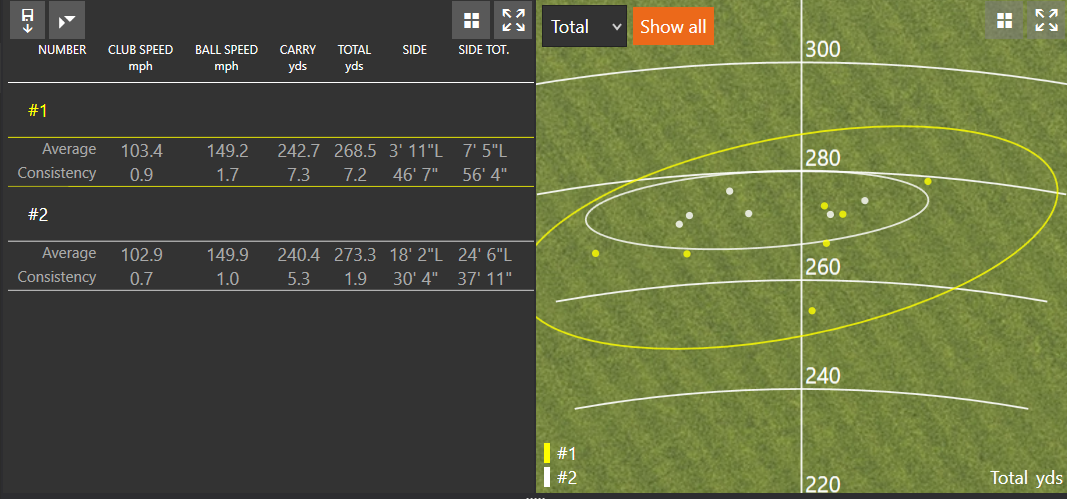
Driver #2 (white) is absolutely the most consistent in length and dispersion despite the fact that he hit Driver #1 (yellow) farther one time. Most golfers only think of their bad shots as “outliers,” when in fact they should often be discounting their very best shot with a club in the cases when the majority of their shots with the club are off-target.
4. Using a Lie Board

Lie boards are a thing of the past. There, I said it. Basing any loft or lie adjustments purely off a lie board is completely useless. On any well struck golf shot, the golf ball has already left the golf club before any significant ground and club interaction has occurred. This means the marks on the bottom of the club tells us next to nothing.
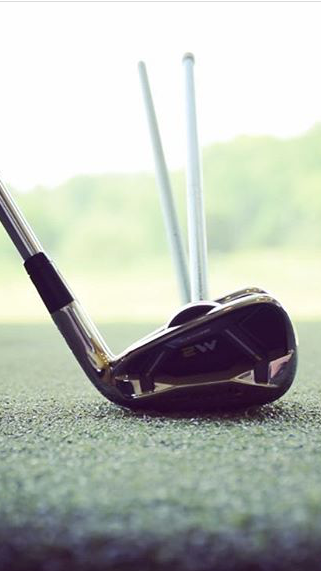
Above is a great picture from a friend of mine, Errol Helling. He’s the owner of Profectus Golf in Nashville, Tennessee. The photo shows the difference in where two golf clubs point at address: one at 3-degrees upright (pointing left) and one at 2-degrees flat (pointing right). It’s important to remember that the photo shows “static loft.” We are most interested in “dynamic loft” and the face angle at impact because that’s what effects ball flight. Just because we have an iron that is orientated a direction at setup does not mean it will point in the same direction at impact.
5. Looking at Divot Direction and Depth
Recently, this has been a frequent topic of discussion in the golf world. I hate to disagree with one of the greats of our game, Ben Hogan, but the secret is not in the dirt. I can’t say that Hogan was wrong, as his thoughts on the golf swing worked very well for him, but we now know that divot direction and divot depth tell us very little about ball flight. You can hit any kind of golf shot with every kind of divot, so why assume that the divot is going to tell us anything valuable?
Below are some pictures of shots I hit on the range. The divot direction is indicated by the alignment stick (on the left in each photo) that travels directly through the divot. The target line is the alignment stick on the right side of the picture. As you can see, the divots had no correlation to direction or curvature.
Shot #1
Shot #2
Shot #3
Shot #4
If you are trying to determine swing faults or fitting issues by looking at divots, you will be chasing an answer that does not exist. Keep your focus on impact location, face angle, club path, and angle of attack, and you’ll be on your way to better fittings.
- LIKE509
- LEGIT81
- WOW23
- LOL16
- IDHT13
- FLOP12
- OB2
- SHANK98
19th Hole
Vincenzi’s LIV Golf Singapore betting preview: Course specialist ready to thrive once again

After another strong showing in Australia, LIV Golf will head to Sentosa Golf Club in Singapore looking to build off of what was undoubtedly their best event to date.
Sentosa Golf Club sits on the southern tip of Singapore and is one of the most beautiful courses in the world. The course is more than just incredible scenically; it was also rated 55th in Golf Digest’s top-100 courses in 2022-2023 and has been consistently regarded as one of the best courses in Asia. Prior to being part of the LIV rotation, the course hosted the Singapore Open every year since 2005.
Sentosa Golf Club is a par 71 measuring 7,406 yards. The course will require precise ball striking and some length off the tee. It’s possible to go low due to the pristine conditions, but there are also plenty of hazards and difficult spots on the course that can bring double bogey into play in a hurry. The Bermudagrass greens are perfectly manicured, and the course has spent millions on the sub-air system to keep the greens rolling fast. I spoke to Asian Tour player, Travis Smyth, who described the greens as “the best [he’s] ever played.”
Davis Love III, who competed in a Singapore Open in 2019, also gushed over the condition of the golf course.
“I love the greens. They are fabulous,” the 21-time PGA Tour winner said.
Love III also spoke about other aspects of the golf course.
“The greens are great; the fairways are perfect. It is a wonderful course, and it’s tricky off the tee.”
“It’s a long golf course, and you get some long iron shots. It takes somebody hitting it great to hit every green even though they are big.”
As Love III said, the course can be difficult off the tee due to the length of the course and the trouble looming around every corner. It will take a terrific ball striking week to win at Sentosa Golf Club.
In his pre-tournament press conference last season, Phil Mickelson echoed many of the same sentiments.
“To play Sentosa effectively, you’re going to have a lot of shots from 160 to 210, a lot of full 6-, 7-, 8-iron shots, and you need to hit those really well and you need to drive the ball well.”
Golfers who excel from tee to green and can dial in their longer irons will have a massive advantage this week.
Stat Leaders at LIV Golf Adelaide:
Fairways Hit
1.) Louis Oosthuizen
2.) Anirban Lahiri
3.) Jon Rahm
4.) Brendan Steele
5.) Cameron Tringale
Greens in Regulation
1.) Brooks Koepka
2.) Brendan Steele
3.) Dean Burmester
4.) Cameron Tringale
5.) Anirban Lahiri
Birdies Made
1.) Brendan Steele
2.) Dean Burmester
3.) Thomas Pieters
4.) Patrick Reed
5.) Carlos Ortiz
LIV Golf Individual Standings:
1.) Joaquin Niemann
2.) Jon Rahm
3.) Dean Burmester
4.) Louis Oosthuizen
5.) Abraham Ancer
LIV Golf Team Standings:
1.) Crushers
2.) Legion XIII
3.) Torque
4.) Stinger GC
5.) Ripper GC
LIV Golf Singapore Picks
Sergio Garcia +3000 (DraftKings)
Sergio Garcia is no stranger to Sentosa Golf Club. The Spaniard won the Singapore Open in 2018 by five strokes and lost in a playoff at LIV Singapore last year to scorching hot Talor Gooch. Looking at the course setup, it’s no surprise that a player like Sergio has played incredible golf here. He’s long off the tee and is one of the better long iron players in the world when he’s in form. Garcia is also statistically a much better putter on Bermudagrass than he is on other putting surfaces. He’s putt extremely well on Sentosa’s incredibly pure green complexes.
This season, Garcia has two runner-up finishes, both of them being playoff losses. Both El Camaleon and Doral are courses he’s had success at in his career. The Spaniard is a player who plays well at his tracks, and Sentosa is one of them. I believe Sergio will get himself in the mix this week. Hopefully the third time is a charm in Singapore.
Paul Casey +3300 (FanDuel)
Paul Casey is in the midst of one of his best seasons in the five years or so. The results recently have been up and down, but he’s shown that when he’s on a golf course that suits his game, he’s amongst the contenders.
This season, Casey has finishes of T5 (LIV Las Vegas), T2 (LIV Hong Kong), and a 6th at the Singapore Classic on the DP World Tour. At his best, the Englishman is one of the best long iron players in the world, which makes him a strong fit for Sentosa. Despite being in poor form last season, he was able to fire a Sunday 63, which shows he can low here at the course.
It’s been three years since Casey has won a tournament (Omega Dubai Desert Classic in 2021), but he’s been one of the top players on LIV this season and I think he can get it done at some point this season.
Mito Pereira +5000 (Bet365)
Since Mito Pereira’s unfortunate demise at the 2022 PGA Championship, he’s been extremely inconsistent. However, over the past few months, the Chilean has played well on the International Series as well as his most recent LIV start. Mito finished 8th at LIV Adelaide, which was his best LIV finish this season.
Last year, Pereira finished 5th at LIV Singapore, shooting fantastic rounds of 67-66-66. It makes sense why Mito would like Sentosa, as preeminent ball strikers tend to rise to the challenge of the golf course. He’s a great long iron player who is long and straight off the tee.
Mito has some experience playing in Asia and is one of the most talented players on LIV who’s yet to get in the winner’s circle. I have questions about whether or not he can come through once in contention, but if he gets there, I’m happy to roll the dice.
Andy Ogletree +15000 (DraftKings)
Andy Ogletree is a player I expected to have a strong 2024 but struggled early in his first full season on LIV. After failing to crack the top-25 in any LIV event this year, the former U.S. Amateur champion finally figured things out, finished in a tie for 3rd at LIV Adelaide.
Ogletree should be incredible comfortable playing in Singapore. He won the International Series Qatar last year and finished T3 at the International Series Singapore. The 26-year-old was arguably the best player on the Asian Tour in 2023 and has been fantastic in the continent over the past 18 months.
If Ogletree has indeed found form, he looks to be an amazing value at triple-digit odds.
- LIKE3
- LEGIT3
- WOW1
- LOL2
- IDHT0
- FLOP2
- OB0
- SHANK0
Opinion & Analysis
Ryan: Lessons from the worst golf instructor in America

In Tampa, there is a golf course that boasts carts that do not work, a water range, and a group of players none of which have any chance to break 80. The course is overseen by a staff of crusty men who have succeeded at nothing in life but ending up at the worst-run course in America. However, this place is no failure. With several other local courses going out of business — and boasting outstanding greens — the place is booked full.
While I came for the great greens, I stayed to watch our resident instructor; a poor-tempered, method teacher who caters to the hopeless. At first, it was simply hilarious. However, after months of listening and watching, something clicked. I realized I had a front-row seat to the worst golf instructor in America.
Here are some of my key takeaways.
Method Teacher
It is widely accepted that there are three types of golf instructors: system teachers, non-system teachers, and method teachers. Method teachers prescribe the same antidote for each student based on a preamble which teachers can learn in a couple day certification.
Method teaching allows anyone to be certified. This process caters to the lowest caliber instructor, creating the illusion of competency. This empowers these underqualified instructors with the moniker of “certified” to prey on the innocent and uninformed.
The Cult of Stack and Jilt
The Stack and Tilt website proudly boasts, “A golfer swings his hands inward in the backswing as opposed to straight back to 1) create power, similar to a field goal kicker moving his leg in an arc and 2) to promote a swing that is in-to-out, which produces a draw (and eliminates a slice).”
Now, let me tell you something, there is this law of the universe which says “energy can either be created or destroyed,” so either these guys are defying physics or they have no idea what they are taking about. Further, the idea that the first move of the backswing determines impact is conjecture with a splash of utter fantasy.
These are the pontifications of a method — a set of prescriptions applied to everyone with the hope of some success through the placebo effect. It is one thing for a naive student to believe, for a golf instructor to drink and then dispel this Kool-Aid is malpractice.
Fooled by Randomness
In flipping a coin, or even a March Madness bet, there is a 50-50 chance of success. In golf, especially for new players, results are asymmetric. Simply put: Anything can happen. The problem is that when bad instructors work with high handicappers, each and every shot gets its own diagnosis and prescription. Soon the student is overwhelmed.
Now here’s the sinister thing: The overwhelming information is by design. In this case, the coach is not trying to make you better, they are trying to make you reliant on them for information. A quasi Stockholm syndrome of codependency.
Practice
One of the most important scientists of the 20th century was Ivan Pavlov. As you might recall, he found that animals, including humans, could be conditioned into biological responses. In golf, the idea of practice has made millions of hackers salivate that they are one lesson or practice session from “the secret.”
Sunk Cost
The idea for the worst golf instructor is to create control and dependency so that clients ignore the sunk cost of not getting better. Instead, they are held hostage by the idea that they are one lesson or tip away from unlocking their potential.
Cliches
Cliches have the effect of terminating thoughts. However, they are the weapon of choice for this instructor. Add some hyperbole and students actually get no information. As a result, these players couldn’t play golf. When they did, they had no real scheme. With no idea what they are doing, they would descend into a spiral of no idea what to do, bad results, lower confidence, and running back to the lesson tee from more cliches.
The fact is that poor instruction is about conditioning players to become reliant members of your cult. To take away autonomy. To use practice as a form of control. To sell more golf lessons not by making people better but through the guise that without the teacher, the student can never reach their full potential. All under the umbrella of being “certified” (in a 2-day course!) and a melee of cliches.
This of course is not just happening at my muni but is a systemic problem around the country and around the world, the consequences of which are giving people a great reason to stop playing golf. But hey, at least it’s selling a lot of golf balls…
- LIKE17
- LEGIT2
- WOW0
- LOL4
- IDHT1
- FLOP2
- OB1
- SHANK21
19th Hole
Vincenzi’s 2024 Zurich Classic of New Orleans betting preview

The PGA TOUR heads to New Orleans to play the 2023 Zurich Classic of New Orleans. In a welcome change from the usual stroke play, the Zurich Classic is a team event. On Thursday and Saturday, the teams play best ball, and on Friday and Sunday the teams play alternate shot.
TPC Louisiana is a par 72 that measures 7,425 yards. The course features some short par 4s and plenty of water and bunkers, which makes for a lot of exciting risk/reward scenarios for competitors. Pete Dye designed the course in 2004 specifically for the Zurich Classic, although the event didn’t make its debut until 2007 because of Hurricane Katrina.
Coming off of the Masters and a signature event in consecutive weeks, the field this week is a step down, and understandably so. Many of the world’s top players will be using this time to rest after a busy stretch.
However, there are some interesting teams this season with some stars making surprise appearances in the team event. Some notable teams include Patrick Cantlay and Xander Schauffele, Rory McIlroy and Shane Lowry, Collin Morikawa and Kurt Kitayama, Will Zalatoris and Sahith Theegala as well as a few Canadian teams, Nick Taylor and Adam Hadwin and Taylor Pendrith and Corey Conners.
Past Winners at TPC Louisiana
- 2023: Riley/Hardy (-30)
- 2022: Cantlay/Schauffele (-29)
- 2021: Leishman/Smith (-20)
- 2019: Palmer/Rahm (-26)
- 2018: Horschel/Piercy (-22)
- 2017: Blixt/Smith (-27)
2024 Zurich Classic of New Orleans Picks
Tom Hoge/Maverick McNealy +2500 (DraftKings)
Tom Hoge is coming off of a solid T18 finish at the RBC Heritage and finished T13 at last year’s Zurich Classic alongside Harris English.
This season, Hoge is having one of his best years on Tour in terms of Strokes Gained: Approach. In his last 24 rounds, the only player to top him on the category is Scottie Scheffler. Hoge has been solid on Pete Dye designs, ranking 28th in the field over his past 36 rounds.
McNealy is also having a solid season. He’s finished T6 at the Waste Management Phoenix Open and T9 at the PLAYERS Championship. He recently started working with world renowned swing coach, Butch Harmon, and its seemingly paid dividends in 2024.
Keith Mitchell/Joel Dahmen +4000 (DraftKings)
Keith Mitchell is having a fantastic season, finishing in the top-20 of five of his past seven starts on Tour. Most recently, Mitchell finished T14 at the Valero Texas Open and gained a whopping 6.0 strokes off the tee. He finished 6th at last year’s Zurich Classic.
Joel Dahmen is having a resurgent year and has been dialed in with his irons. He also has a T11 finish at the PLAYERS Championship at TPC Sawgrass which is another Pete Dye track. With Mitchell’s length and Dahmen’s ability to put it close with his short irons, the Mitchell/Dahmen combination will be dangerous this week.
Taylor Moore/Matt NeSmith +6500 (DraftKings)
Taylor Moore has quickly developed into one of the more consistent players on Tour. He’s finished in the top-20 in three of his past four starts, including a very impressive showing at The Masters, finishing T20. He’s also finished T4 at this event in consecutive seasons alongside Matt NeSmith.
NeSmith isn’t having a great 2024, but has seemed to elevate his game in this format. He finished T26 at Pete Dye’s TPC Sawgrass, which gives the 30-year-old something to build off of. NeSmith is also a great putter on Bermudagrass, which could help elevate Moore’s ball striking prowess.
- LIKE8
- LEGIT3
- WOW1
- LOL1
- IDHT0
- FLOP3
- OB1
- SHANK2
-

 19th Hole2 weeks ago
19th Hole2 weeks agoJustin Thomas on the equipment choice of Scottie Scheffler that he thinks is ‘weird’
-

 19th Hole2 weeks ago
19th Hole2 weeks ago‘Absolutely crazy’ – Major champ lays into Patrick Cantlay over his decision on final hole of RBC Heritage
-

 19th Hole3 weeks ago
19th Hole3 weeks agoTwo star names reportedly blanked Jon Rahm all week at the Masters
-

 19th Hole3 weeks ago
19th Hole3 weeks agoReport: LIV Golf identifies latest star name they hope to sign to breakaway tour
-

 19th Hole3 weeks ago
19th Hole3 weeks agoNeal Shipley presser ends in awkward fashion after reporter claims Tiger handed him note on 8th fairway
-

 19th Hole2 weeks ago
19th Hole2 weeks agoBrandel Chamblee has ‘no doubt’ who started the McIlroy/LIV rumor and why
-

 19th Hole1 week ago
19th Hole1 week agoLET pro gives detailed financial breakdown of first week on tour…and the net result may shock you
-

 Equipment3 weeks ago
Equipment3 weeks agoJason Day on his recent switch into Srixon ZX5 and ZX7 Mk II irons

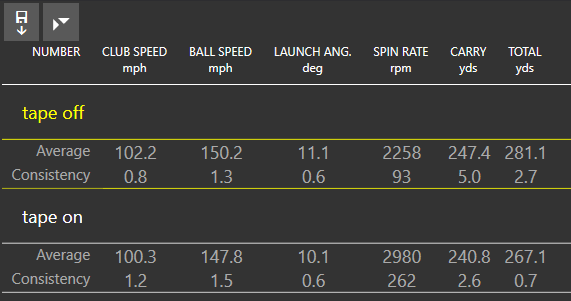
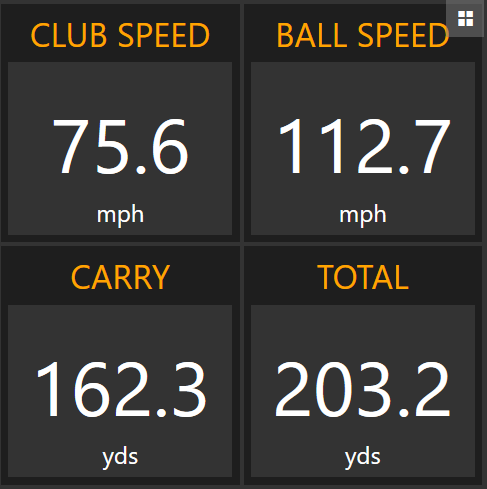
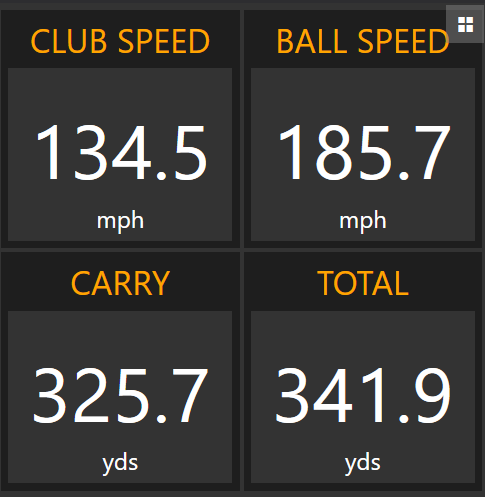
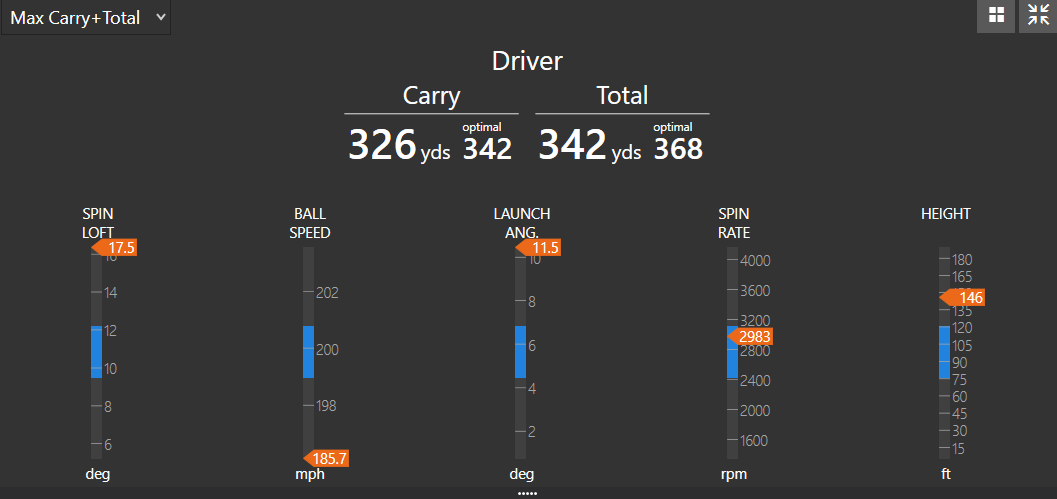
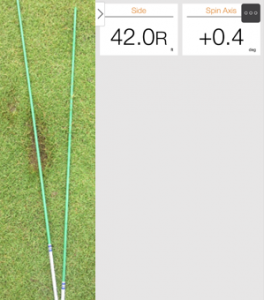
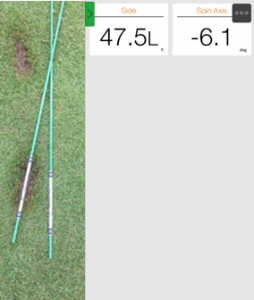
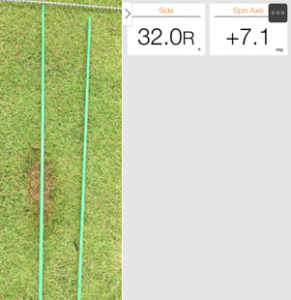
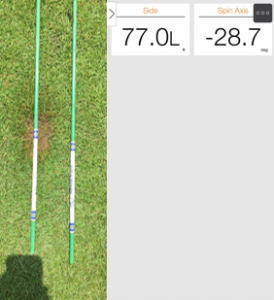

















when_is_a_wrench_not_a_wrench
Aug 27, 2017 at 3:29 pm
Did anyone notice the main photo shows someone pretending to insert a wrench into a M2 Tour Iron head?
Beta
Aug 27, 2017 at 8:22 pm
Yeah? So? It’s a Fitting head. They have one of those last year lol so he’s not pretending
SoonerSlim
Aug 27, 2017 at 11:02 am
Hunter, very interesting article, but for me it did not go far enough because I’ve never seen and do not understand what the side and spin axis numbers you offer for the divot pictures represent. Unfortunately, you did not go far enough and offer an explanation for them. For example, what’s the difference between + and – spin axis? What does the side number mean? Great article except for the last part.
thanks, SoonerSlim
Hunter Brown
Aug 27, 2017 at 1:28 pm
Sooner, thanks for reading and giving your feedback. You are probably right I should have included some definitions about Spin Axis and Side. Coming from that world sometimes I forget not everyone knows the terminology. Spin axis represents which way the golf ball is curving so if positive the ball is curving to the right and if negative it is curving to the left. Side represents how far off of the target line the ball landed. Hope this helps! If you want to learn more about TrackMan Definitions visit the trackman blog.
SoonerSlim
Aug 27, 2017 at 9:34 pm
Thanks, Hunter
Never have seen or used a trackman, too old school I guess.
S
Michael
Aug 26, 2017 at 11:10 am
What if your line is straight on the club face but out towards the toe?
Beta
Aug 27, 2017 at 8:24 pm
Stand closer? Juuuuust kidding.
Jeffrey
Aug 26, 2017 at 4:14 am
Heres an idea. Why don’t we go out with our golf clubs and hit the ball and have some fun and forget about all this numbers/fitting/trackman/drills/etc BS. If you play good, great. If you play bad, there is always next time.
emb
Aug 28, 2017 at 2:49 pm
ya who cares about shooting your best possible scores, might as well buy your equipment from walmart and play top flites right
Stevegp
Aug 25, 2017 at 11:50 pm
Enjoyed the article and subsequent discussion. Getting fitted and hitting a club outdoors always seemed much different–and better–than hitting into a net while indoors.
Guia
Aug 25, 2017 at 6:38 pm
I am lost! Seems most of what has been accepted in the past is wrong, or misused.
Marooned
Aug 25, 2017 at 6:04 pm
No idea of how the “fitting culture” are in the states. But here in Europe (Sweden) most of this is common sense except your point of the lieboard.
It is such a great and easy tool and a must have. One thing about lie though that I feel is that many people just hit a couple of shots with an 7-iron and that sets the marknfor the lieangle throughout the set.
A longer iron such as an 4-iron often needs a more upright lieangle then a 9-iron for example.
The majority of people a do an lietest with hitting a 4, 7 and 9-iron are hitting it more on the toe with a 4-iron compared to the 9-iron.
Bert
Aug 26, 2017 at 6:23 pm
Good thoughts – I’ve always just hit a 6 or 7 off the lie board. I’ve measured all my lofts and lies but tomorrow I’ll hit the long irons and short irons off the board and note the results.
Bob
Aug 25, 2017 at 4:22 pm
Gee, it seems like there is a lot of disagreement about proper club fitting technique. I have gotten advice about clubs on several occasions but never really had a fitting. One reason is that I have heard so much disagreement about how it should be done and am not aware of any standards or any acknowledged experts (e.g. Ping vs Callaway, etc.). I suppose the best shot might be to work with a pro, who also provides instruction and who will be around to provide guidance after new clubs are purchased or current clubs are adjusted for length, loft, lie, swing weight, grip, etc. The big question is why spend a lot of money, if you don’t know what you are buying?
Rors
Aug 25, 2017 at 4:15 pm
Steve Elkington has a video on youtube about dynamic fitting for irons… He marks a ball with a sharpie and that mark imprints on your club… I tried it and its the best…
Ben Jones
Aug 25, 2017 at 3:24 pm
Good Lord! How did we survive before technology. Now, I can get some really great clubs perfectly fit for me on that day for $4,000 or more, but if my swing ain’t worth crap and I can’t putt, what good is all this?
Lorne
Aug 25, 2017 at 3:19 pm
Clubs have a ‘static’ lie and a ‘dynamic’ lie which is a function of shaft tip ‘droop’. The position of the hands and club butt end changes through release and impact, which will affect the shaft lie.
The weight and shape of the clubhead will affect dynamic lie because the clubhead CofGs vary the droop characteristics of the shaft. Shaft specs influences dynamic loft as does downswing plane and clubhead speed which can vary as the golfer fatigues during the round.
So we have how many variables for dynamic lie? 6? 7? 8? 9? More? Less?
A good fitter can measure several of these lie factors but must also use intuitive knowledge to match the golfer to the optimal shaft and clubhead, and grip too. Good luck.
Tata
Aug 25, 2017 at 2:41 pm
In regards to #3.
I can guarantee you that 9 out of 10 amateurs who can’t hit their driver past 200 yards is solely focused on that aspect. They don’t care about anything else, because they all believe that once their distance is sorted out, that they can then learn to control their ball flight. Which is deadly absolutely true.
Dave
Aug 25, 2017 at 2:28 pm
Very interested in this article, yes I understand how you can determine lie angle by using a marker pen on the ball and Callaway use this method a lot with there fitting. We use the marker on the ball when fitting outdoors, but indoors with launch monitor the Marker ruins the white screen we have for our projector and leaves black marks on the screen. Would be interested to know if there are any other ways of determining a correct lie angle without the option of a lie board or marker pen on a ball???
Noodler
Aug 25, 2017 at 8:26 pm
I temporarily hang a black tarp/net in front of the screen to prevent the marker from being left on the white screen.
Hunter Brown
Aug 25, 2017 at 8:28 pm
Dave I would suggest always keeping your focus on flight and dispersion. From there if you need to make adjustments to lie angle you can but it shouldn’t be the first thing we go to
Noodler
Aug 26, 2017 at 9:21 am
Sorry Hunter, but I believe this is misguided advice. Golfers should be fit to their physique, strength, flexibility, etc., not to their swing mechanics. Swing mechanics will change over time (even day to day). Using lie angle adjustment to compensate for swing flaws is not the right approach. Trying to use club fitting to compensate for swing flaws is the 6th biggest mistake in club fitting.
Hunter Brown
Aug 27, 2017 at 9:19 am
Why can’t it be both? I never said you shouldn’t fit for the human being in front of you. Too much mutual exclusivity in your train of thought.
TexasSnowman
Aug 25, 2017 at 11:31 am
Agree with the comments on hitting indoors; I never feel like I hit my best shots. Club Fitting needs some type of standards or certification for competence. Even if you pay for a “tour level” fitting, you really have no idea if the fitter knows what he is doing… I’m not saying take all the ‘art’ out of the process, but it’s really the wild west out there in terms of quality.
Bobalu
Aug 25, 2017 at 10:50 am
Hunter- Great points! Fittings need to be done with a competent fitter with Trackman on the range. Period. Good luck finding this.
ADIDAG
Aug 25, 2017 at 10:36 am
Looks like to get optimum anything players need to focus on roll
Nack Jicklaus
Aug 25, 2017 at 9:59 am
You can get a good idea if your lie angle is correct by drawing a straight line around the circumference of a ball with a sharpie. Sit the ball on the ground with the line pointing straight up and down and with the line also pointing directly where you intend to hit the ball (just like people who line up putts with a line drawn on their ball). Now hit your shot and some of the sharpie line will stick to the face of your club. If the line is perfectly perpendicular to the grooves on your club, then your lie angle is correct. If not, it needs changing one way or the other.
Steve
Aug 25, 2017 at 12:47 pm
100% spot on. Well done.
Hunter Brown
Aug 25, 2017 at 6:26 pm
I agree with this however if the line is perpendicular and the golf ball is going as straight as possible for that player then why should we care. My point is we should always focus on ball flight not the extraneous details that sometimes do or do not matter
Sam
Aug 25, 2017 at 9:56 am
Lie angle has been a big question mark for me. So what is a better way to determine this other than a lie board? Almost, every ‘fitter’ or club seller I’ve seen, used a lie board, with one exception at DSGoods .. one employee used impact tape and adjusted lie angle until center contact was made .. very strange to me.
OGWC
Aug 25, 2017 at 10:05 am
Use a dry erase marker and put a vertical line on the ball. This is a simple and effective way to read the lie. When you hit the ball, the line gets transferred to the club face. A straight line up and down on the iron face means the lie is good.
Hunter Brown
Aug 25, 2017 at 6:30 pm
Dry erase is a decent solution however I would suggest just to focus on ball flight and dispersion. I would never care if a sharpie isn’t perpendicular or a piece of tape on the bottom of the face is telling me the club is “upright”. If a player is getting good results then that’s all that matters on course.
Noodler
Aug 25, 2017 at 8:30 pm
This only makes sense if you adhere to the idea that you should use lie angle adjustment to change ball flight. Many other factors could be impacting ball flight. Trying to fix ball flight due to other swing flaws via lie angle adjustments is a fool’s folly (IMHO).
KV
Aug 25, 2017 at 9:49 am
Help me understand your thoughts on lie boards. You talk about dynamic loft but criticize the lie board. It’s not called a “loft” board it’s a lie board. How else do we adjust lie without knowing where and how the club sole contacts the ground? Get everything else right and have the wrong lie adjustment and you’ve wasted a lot of time.
Hunter Brown
Aug 25, 2017 at 6:32 pm
Hey KV thanks for reading and your thoughts. I would always start with ball flight and dispersion if this is something you can measure or a pro near you can. Lie board’s tell us nothing about the shot that was just hit so I don’t know why we should care.
JN
Aug 25, 2017 at 7:21 pm
Although there are better ways to examine dynamic lie over the lie board (e.g. HMT), it definitely is relevant. Regardless of someone’s ball flight, getting them fit so that the dynamic lie is near 0 will improve their consistency and quality of impact. It’s just hard to consistently hit the center of the face when the toe or heel of the club dig into the ground early. The small change in face angle due to a lie change can be always be addressed after the fact. If you need help with a slice, just closing the face during setup with a proper lie angle is better than making impact toe up and getting the face closed from that.
Justin
Aug 25, 2017 at 8:58 am
You say not to use a lie board…not to look at divots…. How do you determine proper lie? Cannot do by shot pattern into a net. If you are going to give criticism, provide a solution as well.
Jon
Aug 25, 2017 at 9:19 am
I couldn’t agree more, Justin. How am I supposed to determine the proper lie angle without the aid of a lie board? I am new at this and am trying to learn how to make the proper adjustments on my own.
Nick
Aug 25, 2017 at 9:48 am
Trackman
Nick W
Aug 25, 2017 at 11:15 am
Trackman does not tell lie angles, trackman spits out information regarding ball flight. It does not care if its 10* upright or 2* flat.
Matt
Aug 25, 2017 at 11:15 am
Take some chalk or marker that will transfer when struck. Draw a straight line on the ball. Put the ball on the ground with the line vertical where you will strike it. Hit the ball. Look at the club face… you’ll have a good idea whether your club is too flat or upright.
Hunter Brown
Aug 25, 2017 at 6:35 pm
Hey Justin thanks for the input. I would always prefer to do a fitting outside if possible. Even on the course sometimes. If not possible and you are only hitting into a net then hopefully you have availability of TrackMan. If not I would suggest trying to find one. My point of lie boards and divots is that they have no correlation to what the ball is actually doing so why should we care? TrackMan does not specifically spit out a number called lie angle however it does tell us Face Angle at impact and Dynamic loft which would be a result of lie angle. If those numbers are good then you should be ok.
Jon
Aug 25, 2017 at 8:54 am
If lie boards are horrid, how am I supposed to determine what lie angle is best suited for me? I am looking for a little more education on this subject as I am just getting started with trying to assemble and adjust my own clubs. Thank you in advance for any and all advice.
Greg
Aug 25, 2017 at 10:15 am
Draw a vertical line on the ball with a sharpie. Examine the line it leaves on the club face. Adjust until vertical. Google it or search the forums.
Hunter Brown
Aug 25, 2017 at 6:47 pm
Hey Jon thanks for reading and taking the time to respond. I would rather the focus to be on ball flight and dispersion in a fitting. Also loft and lie adjustments can sometimes be a band aid for a bullet hole as it doesn’t address the root cause of the issue. Not always the case if you are really trying to dial things in with little tweaks but I get scared when people are fit for major lie adjustments. Often I think it actually makes the problem worse. I would work from the ball flight backwards. If thats good then why adjust? If it isn’t then you can make some adjustments of the loft lie but as I said earlier be cautious
Loz
Aug 26, 2017 at 3:44 am
So as I’m 6′ 4″ provided I can hit an off the shelf club ok I shouldn’t worry about custom fitting? On the Ping scale I come out at 4 degrees upright and plus one inch. I know I can hit an off the shelf club well, but won’t I subconsciously be compensating in my setup and swing. I’m a 4 hcp and have pretty solid fundamentals. Surely I’m going to be catching the toe first on everything, which can’t be a good thing. What would be my start point in your fitting?
Robert Malaussena
Aug 25, 2017 at 8:52 am
Get fitted by your local PGA pro on a range.
Bert
Aug 26, 2017 at 7:08 pm
I’m not sure that’s good information. PGA Pro, good fitting? Maybe find a good PGA professional or golf instructor for lessons.
xjohnx
Aug 25, 2017 at 8:48 am
Though some of these mistakes are made only in professional, outdoor fittings, #3 is the biggest thing wrong with the golf industry as a whole. Most people getting “fit” are walking into a sporting goods store or golf shop and comparing a few drivers and looking at the “numbers” on a very one dimensional basis and in a short amount of time. #3 happens just about everywhere just about every time.
Me
Aug 25, 2017 at 8:47 am
As a fitter ….
Irons, I weigh on more ball flight, direction and consistent carry. Ideally on natural turf as opposed to a hard mat. Driver; I agree completely with the writer, then again the golfer has final say, after reviewing the data of what ball flight they “like” . There are some that prefer a lower ball flight period, its often what they feel the most comfortable with- despite the technology and Data. Sergio for example prefers a slightly lower & more boring trajectory. No everyone is like Sergio but there is a fair amount of my customers that prefer a 10 degree launch angle than a say a 12.
Even tougher to fit is older guys, who have slowly lost distance every year. Who in a subtle attempt of trying to speed up the driver head at impact, resort to lurching ahead of the ball with their hips, body and head, de-lofting the head to a negative attack angle. Rather than neutral or +1, 2, 3 degree attack angle by staying behind the ball.
good article over all.
Andy
Aug 25, 2017 at 8:39 am
I suspect many people do not feel like they are swinging 100% like they normally do with indoor fittings. I am one of those people who feel confined and I also like to have a further away target. We will look back at hitting balls 15 feet into a padded screen as a huge mistake. Hit the clubs on the range and on the course before purchasing. Not many fitters offer this.
There will come a day when we can swing some tool at a course and capture all the necessary data and the tool will identify the possible clubs to maximize our swing. The possible clubs will include past years and even various cost options. The Fitter model today is like new car salesman. I don’t feel 100% sure that their interest and my interest is fully aligned.
Me
Aug 25, 2017 at 8:52 am
Andy, that’s not unusual & normal for some. I compare the feeling you have to driving a car. When we do we focus on an object 100-150 feet ahead ( depending on car speed) as opposed to looking just over the hood and have to constantly correct steering of the automobile. In other examples some people feel like they are hitting into heavy fog when being fitted in an indoor simulator. I still do the fitting, but once things are narrowed down, take the club outdoors.
Tom F. Stickney II
Aug 25, 2017 at 8:34 am
Good points HB!
Hunter Brown
Aug 25, 2017 at 6:36 pm
Thanks Tom hope you are well!
Thus
Aug 25, 2017 at 8:21 am
Great advice, as a club fitter I recommend all other fitters and even coaches read this… lie boards are horrid and reading divots can create disastrous thoughts
Nick W
Aug 25, 2017 at 11:18 am
What would you propose for lie angle assessment if you are not using a lie board or reading divot patterns?
Loz
Aug 26, 2017 at 3:26 am
Yes I’d like to hear this too. I’m 6′ 4″ and am 4 degrees upright on the Ping scale. I currently have 2 degree up 1/2″ long Mizuno from their national UK fitting centre, yes a lie board was used. As I can hit my friends off the rack club straight, probably subconsciously compensating in my setup and swing, then I actually don’t need custom fit clubs. My natural swing is always going to hit slightly toe down and you think there’s nothing wrong with this in the long term?